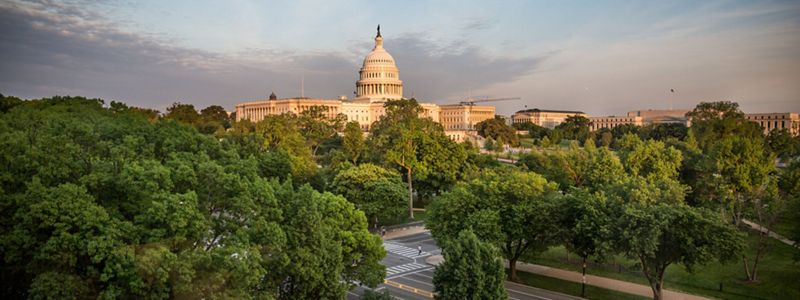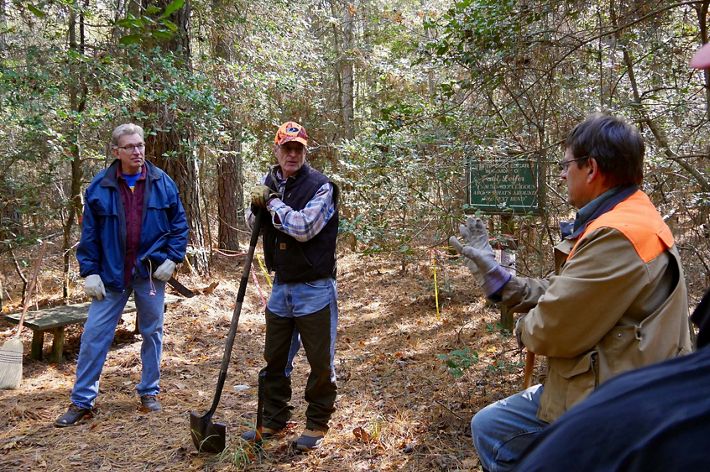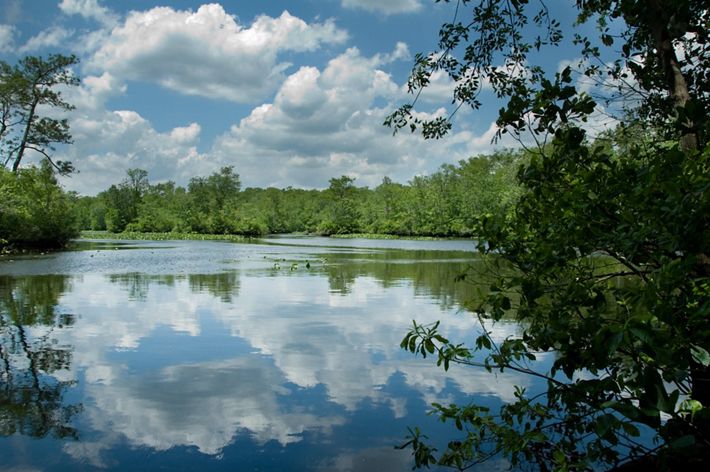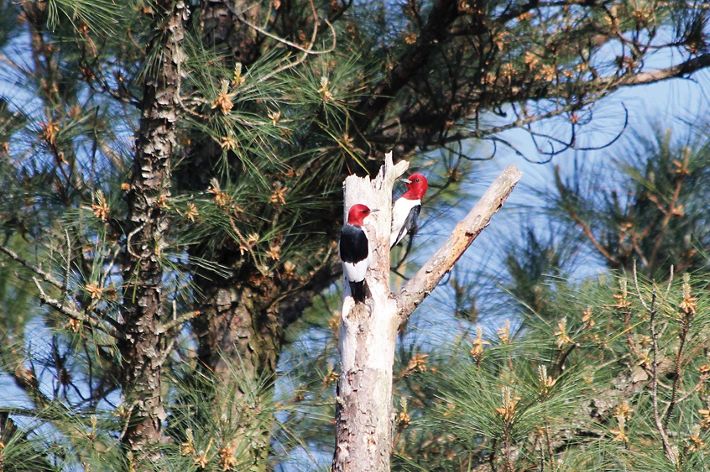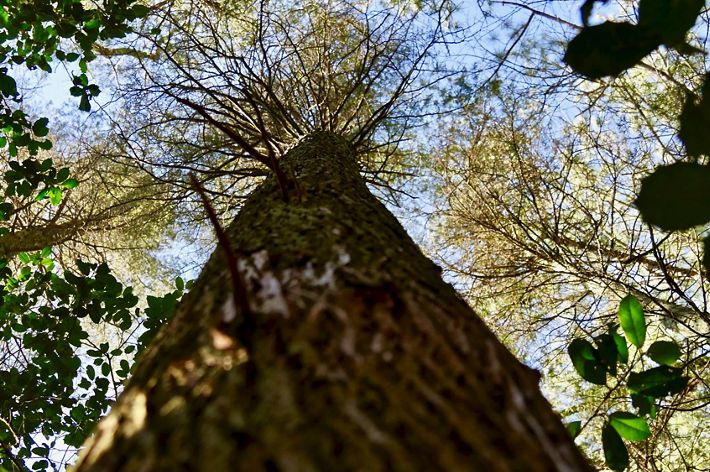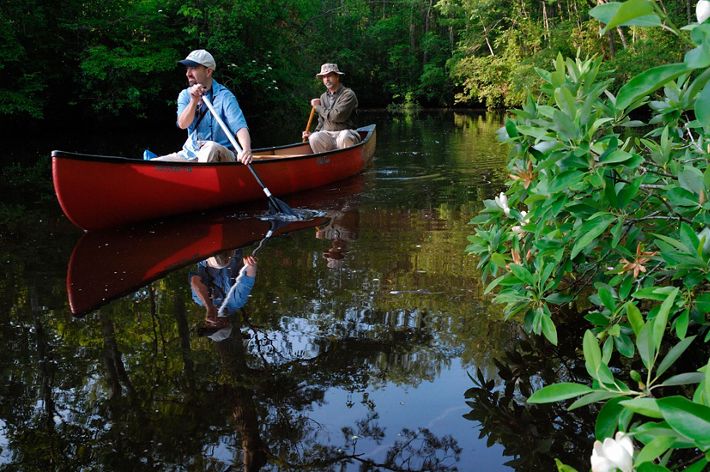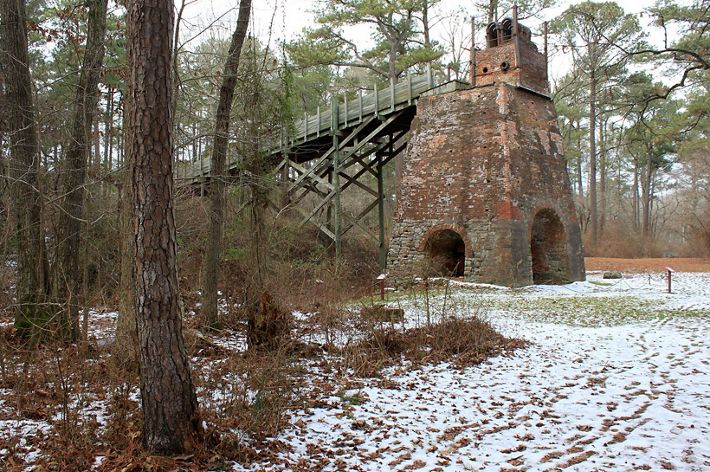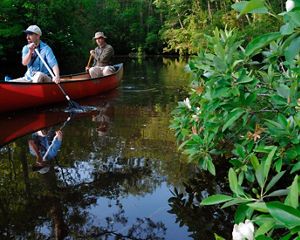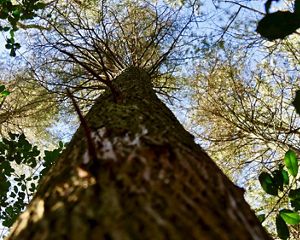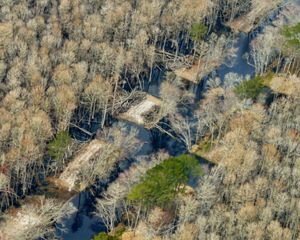Dedicated to Service and Nature
Meet the members of the Nassawango Stewardship Committee, going strong for more than 40 years.
“Ah, look at this!” On a brisk yet sunny November Sunday on the Eastern Shore, retired commercial photographer Gary Marine is delighted upon finding a message in the mud.
Surrounded by towering trees within the forest of Nassawango Creek Preserve, and accompanied by a handful of other local community members, he goes on to say, “It’s a deer scrape. This deer is leaving a message for anyone who wants to read it. For the juvenile buck, he is saying, ‘get out,’ and for the doe he is saying, ‘here I am.’ It’s like Tinder for deer!”
Gary came across this deer’s dual-purpose note while volunteering for the Nassawango Stewardship Committee, The Nature Conservancy’s longest-serving volunteer group. For more than 40 years, members of the committee have given countless hours of their personal time to maintaining the Nassawango Creek Preserve, one of the last pieces of true wilderness left on the East Coast.
While Nassawango Creek Preserve is home to a diversity of wildlife and native flora, including river otters, red-shouldered hawks and pitcher plants, it is also a place for the public to experience the tranquility of nature on the Eastern Shore. Volunteers like Gary ensure that the beauty of Nassawango Creek Preserve is accessible to the over 4,000 visitors who walk the trails, canoe Nassawango Creek and admire the preserve’s rare and endangered plants and animals each year.
The preserve is currently 9,953 acres, which is quite a feat, considering that it started out as a donation of just 154 acres approximately 40 years ago.
How It Started
The impetus behind the donation of 154 acres came from two seasoned canoers, Joseph (aka Joe) and Ilia Fehrer of Snow Hill, MD. In 1972, this husband and wife team began intensive efforts to persuade the State of Maryland, along with various land trust and conservation groups—including The Nature Conservancy—to acquire lands alongside the Pocomoke River and its tributaries.
Joe and Ilia felt that preservation of lands along these waterways was imperative for a host of reasons, including the great biodiversity of the area; the amount of rare, threatened and endangered species; and the intrinsic beauty of this large unaltered space—they were right.
In 1974, a survey designed by TNC revealed that out of 262 sites studied, the Nassawango cypress forest was one of the top three most ecologically important wilderness areas in the Chesapeake Bay region. Given this incredible finding, TNC decided to proceed with land acquisition along the Pocomoke River.
On December 29, 1978, E. Stanton Adkins, a trustee of TNC’s Maryland chapter, launched the Nassawango Creek Preserve with his gift of the first parcel—154 acres between Red House Road and Furnace Road—a stunning combination of cypress swamp and mixed hardwood uplands.
Ilia and Joe were thrilled by Adkin’s donation to TNC, but this newly acquired pristine parcel would require some serious tender loving care to be maintained.
The Nassawango Stewardship Committee
In 1979, Steve Hamblin, the director and founder of TNC’s Maryland chapter, wrote to a local attorney who had offered land stewardship assistance in the past. Steve asked the lawyer to please work with Joe Fehrer on assembling a group of eight to ten people who would serve as the stewardship committee for the newly acquired Nassawango Creek Preserve—a preserve that was expected to expand considerably.
Shortly after Steve’s request was made, Joe and Ilia found themselves in a cramped room with a small group of community members who would soon comprise the first fleet of the Nassawango Stewardship Committee.
Through the years, the Nassawango Stewardship Committee grew in number and, as predicted, the preserve grew as well. By 1982, the preserve had increased to 1,500 acres. By 1990, the preserve was a little more than 3,000 acres. Today, Nassawango Creek Preserve is a total of 9,953 acres, which includes massive bald cypress and black gum forests, wildlife such as painted turtles and yellow-billed cuckoos, rare grasses and much more.
Quote: Todd Peterson, committee member
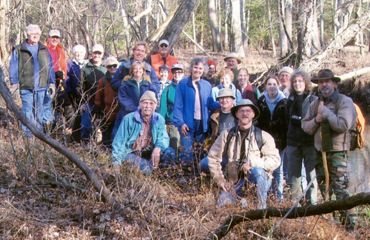
It is really fun to be out here doing something good for people and nature.
The Committee Today
The tasks of our modern-day stewardship committee are varied. Todd Peterson, committee member and owner of a wood-working business in Ocean City, recalls that some workdays involve, “Cutting back growth and cutting out invasive species.” With a smile, he adds, “Greenbriar is always a favorite challenge.” Other duties of the stewardship committee include maintaining stream crossings, constructing rustic fences and maintaining the walking trails.
Performing these tasks may sound like a thankless job, but for the members of the Nassawango Stewardship Committee, maintaining Nassawango Creek Preserve brings great satisfaction.
Nassawango Stewardship Committee
The small group of determined environmentalists who met in a packed office 40 years ago paved the way for today’s Nassawango Stewardship Committee, which now has more than 30 active members under the leadership of chairman George Parker.
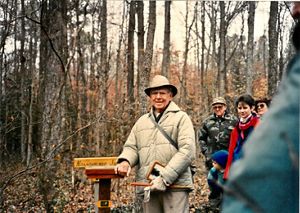
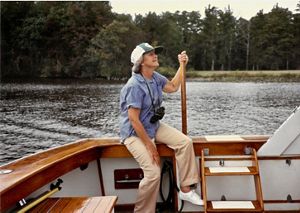
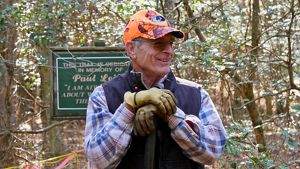
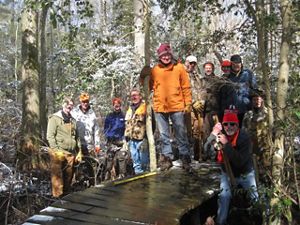
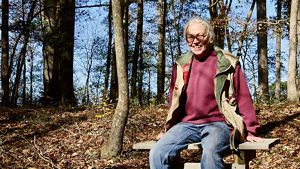

Conservation Legacy: Joe Fehrer, Sr., at the dedication of the Nassawango Joe Trail, Nassawango Swamp Preserve, 1991. © courtesy Joe Fehrer, Jr.

Service to Nature: Ilia Fehrer enjoys an outing on the Pocomoke River, October 1988. © courtesy Joe Fehrer

Stewardship and Leadership: George Parker, Nassawango Stewardship Committee Chairman, on the Leifer Trail during a preserve workday. © Matt Kane / TNC

A Commitment to Nature: Members of the Nassawango Stewardship Committee during a workday on Leifer Trail. © Michael Conger

Stewardship Committee: Nassawango Stewardship Committee member Brigitte Pennewell during a preserve workday. © Matt Kane / TNC
Volunteer Janice Ward, a retired school librarian, remarked, “I live on Nassawango Creek, so you can imagine, it is important to me that we maintain the creek like it is.”
For Todd, motivation to volunteer comes from giving back to the community, “It is really fun to be out here doing something good for people and nature.” As a bonus, being a member of the stewardship committee brings a sense of comradery.
Janice adds, “We have a really nice group of people who all share a common interest.”
George Parker, Nassawango Stewardship Committee Chairman for the past ten years, comments on this special group, “I am particularly proud that this committee is the longest continuously running committee in the history of The Nature Conservancy. We don’t know of any as continuous as this one. To me, that is pretty amazing.”
The Beauty of Nassawango
Nassawango Creek Preserve is a sanctuary for wildlife, like the gray fox and the northern water snake, and Nassawango Creek itself is extremely ecologically important for a myriad of reasons.
The creek is a spawning ground for rockfish, herring and shad and it provides habitat for at least 16 native fish species including the mud sunfish, a state-rare species. The creek is also a nesting ground and protected route for many migratory birds including approximately 24 species of warblers. Waterfowl such as wood ducks, black ducks and several other species call Nassawango Creek home throughout the year.
In 2020, stewardship committee member and amateur botanist Chase Howard discovered a dwarf sundew plant at the preserve, the first sighting of its kind in the state of Maryland. Other species are making returns to Nassawango, including beautiful white-fringed orchids and crested yellow orchids.
The Nassawango Creek Preserve is a true treasure for a host of reasons. TNC is very thankful to the Nassawango Stewardship Committee for their hard work and dedication.
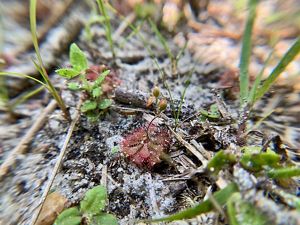
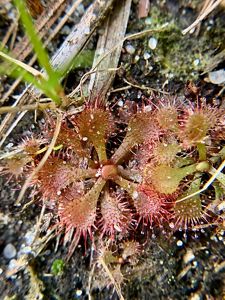
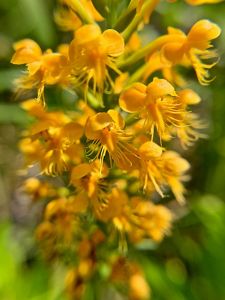
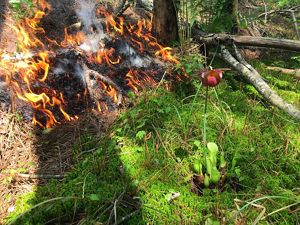
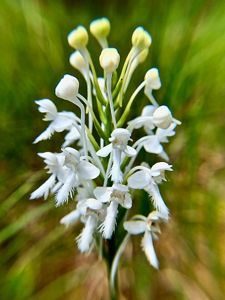
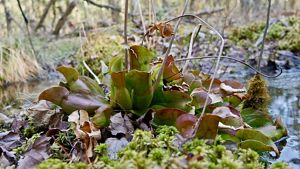
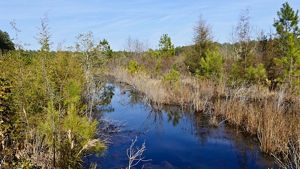
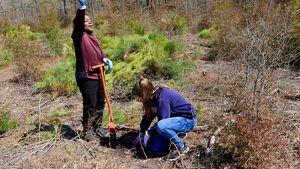
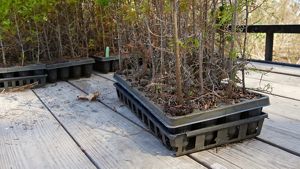
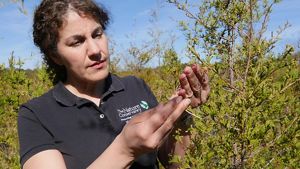

Dwarf sundew: Drosera brevifolia, is an exciting find at Nassawango! The species has never before been found further north than North Carolina. © Matt Kane / TNC

Dwarf sundew : Drosera brevifolia, is an exciting find at Nassawango! The species has never before been found further north than North Carolina. © Matt Kane / TNC

Crested Yellow Orchid: Platanthera cristata has a rich yellow-orange hue and a short “tongue” with tassles spreading out below. © Matt Kane / TNC

Good Fire: Fire from a controlled burn slowly moves towards a purple pitcher plant at Maryland's Nassawango Creek Preserve. © Chase McLean / TNC

White-fringed orchid: Platanthera blephariglottis is distinguished by its bright white color and long tongue protruding from the bottom of the flower. © Matt Kane / TNC

Carnivorous Plants: Pitcher plants at Nassawango Creek Preserve. © Matt Kane / TNC

Nassawango Restoration: Atlantic white cedar trees have been planted at Nassawango Creek over a 10-year period through an annual planting event organized by the National Aquarium in Baltimore. © Matt Kane / TNC

Planting Atlantic White Cedar: Two students work together to plant Atlantic white cedar seedlings at Maryland's Nassawango Creek Preserve. © Matt Kane / TNC

Atlantic White Cedar Seedlings: Since 2009, Worcester, Wicomico and Somerset County middle school students have planted more than 37,000 Atlantic white cedar seedlings at Nassawango Creek Preserve. © Matt Kane / TNC

Atlantic White Cedar: MD/DC Conservation Ecologist Deborah Landau at an Atlantic white cedar planting site at Nassawango Creek Preserve. © Matt Kane / TNC
Join the Nassawango Stewardship Committee
The Nassawango Stewardship Committee maintains the Nassawango Creek Preserve on Sundays bi-weekly five months out of the year (November through March) from 9 a.m. to 1 p.m. If you would like to volunteer with this group, of if you would like more information, please contact chairman George Parker gparkerr65@gmail.com.
Visit Nassawango Creek Preserve
Nassawango Creek Preserve is open year-round during daylight hours for nature walks, kayaking and canoeing in designated areas. Use these activity ideas to help you plan your trip!
Canoeing Nassawango Creek is an unforgettable experience as the massive trees of this primeval forest envelop visitors with ample shade. Rent a canoe in Snow Hill, MD and take a leisurely two-mile paddle on the creek between Red House Road and Nassawango Road. Along the way, you can take a rest and walk along the Francis M. Uhler Nature Trail.
Walk the Paul Leifer Trail, a one-mile loop that winds its way through the upland woods, bald cypress swamp and a 19th century canal. Along the trail you will see interpretive signs, benches and boardwalks through wet areas. To reach the trailhead, visitors can simply pass through the Furnace Town visitors center during normal operating hours.
We Can’t Save Nature Without You
Sign up to receive monthly conservation news and updates from Maryland/DC. Get a preview of Maryland/DC's Nature News email.
